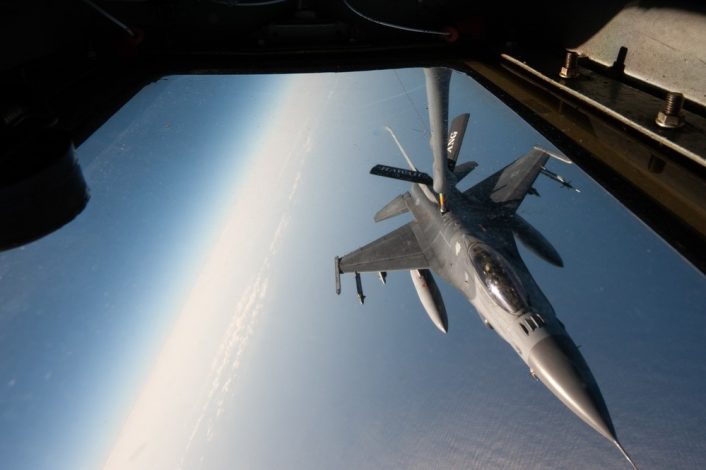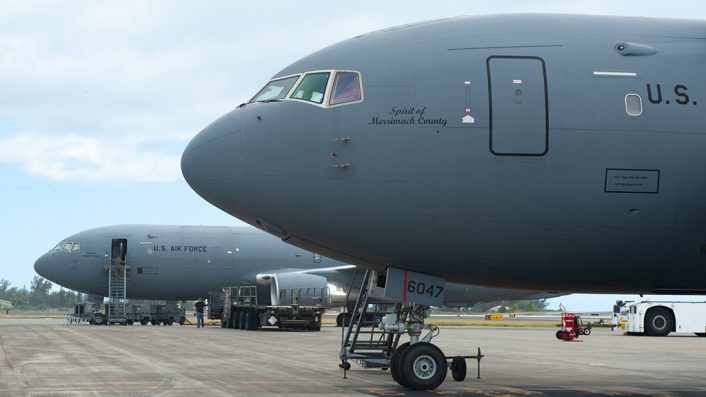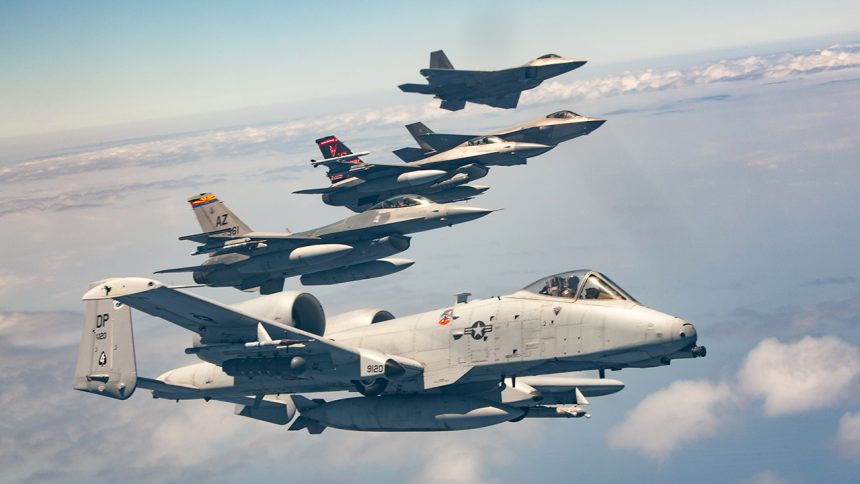Sentry Aloha 24-2 Unites Total Force Warfighters in Hawaii.
Exercise Sentry Aloha is a training drill hosted by the Hawaii Air National Guard’s 154th Wing. The 24-2 edition took place from May 29 through June 12, 2024, involving more than 1,000 participants from nine states and four different service branches.
Aircraft operations were conducted at various locations on the islands of Oahu, Hawaii, including Marine Corps Base Hawaii and Ellison Onizuka Kona International Airport at Keāhole.
This year’s iteration focused on distributed mission planning and operations philosophy. Daily training sorties included air-to-air combat and air-to-surface mission profiles, featuring large-scale combat simulations with advanced enemy aircraft acting as “red air.”
Participating aircraft included A-10 and F-16 Fighting Falcons from the Air National Guard Air Force Reserve Test Center (AATC), F-16s from the 177th Fighter Wing, and F-35As from the 422nd Test and Evaluation Squadron. These aircraft joined the 154th’s locally based F-22 Raptors, operated by the 199th and 19th Fighter Squadrons.

Blue Air fighters were employed in various scenarios, including protecting the A-10s during close air support operations in the Pohakuloa Training Area. CAS (Close Air Support) activities were managed by the airmen of the 25th Air Support Operations Squadron.
In addition to air-to-ground strikes, the aircraft conducted maritime strike missions with support from the U.S. Navy and U.S. Marine Corps.
It’s not clear whether the A-10s were also involved in these missions, however, it’s worth highlighting that, recently, four Warthogs were depicted circling the Navy Ohio Class USS Nebraska (SSBN 739) nuclear submarine as it transited the Strait of Juan de Fuca. The Commander of Submarine Group 9 reported on social media that the aircraft were involved in a joint escort mission, although specifics were not disclosed.
We want to be seen! SUBGRU 9 at Kitsap sub base posts photos of USS Nebraska (SSBN-739) leaving under protective escort 6 May for a (presumably) nuke deterrent patrol in Pacific. https://t.co/fTkR9QJ0qQ
US SSBNs each carry average of about 90 warheads. https://t.co/eB2FHNnxo2 pic.twitter.com/nvtQoRsofG
— Hans Kristensen (@nukestrat) May 8, 2024
In September 2023, two A-10s took part in a joint Air Operation in Maritime Surface Warfare (AOMSW) exercise in the Gulf of Oman, with U.S. Navy’s Arleigh Burke-class guided-missile destroyer, USS Stethem (DDG 63) during which they engaged simulated surface threats.
Thanks to its low speed and significant firepower, the A-10 can be considered a valid platform for conducting counter-sea operations in a low-threat scenario, providing force protection and escort to high-value maritime assets such as nuclear submarines against fast craft threats. In that respect, the type has been involved in combat maritime strike missions in the past.
For instance, in 2011, during Day 11 of Operation Unified Protector, a U.S. Navy P-3C patrol aircraft, an A-10 from the 81FS deployed to Aviano, and guided-missile destroyer USS Barry (DDG-52) engaged a Libyan Coast Guard vessel Vittoria and two smaller crafts after confirmed reports that Vittoria and accompanying craft were firing indiscriminately at merchant vessels in the port of Misrata, Libya, during the evening Mar. 28, 2011.The P-3C fired an unspecified number of AGM-65F Maverick missile (infrared targeting version optimized for ship tracking) at Vittoria, after multiple explosions were observed in the vicinity of the port, forcing the 12-meter patrol vessel to be beached. An A-10, using its 30mm GAU-8/Avenger gatling cannon destroyed one the two small craft rendering the other one ineffective (it was later abandoned) while Barry guided-missile destroyer managed the airspace and mantained the maritime picture providing attacking aircraft with the required situational awareness.
Supporting units
Sentry Aloha exercise was supported by the 169th Air Defense Squadron, which diligently monitored and relayed battlespace information.
“Exercises like this are exactly what we need to operate on a larger scale and as a joint force,” said Tech. Sgt. Kukila Carreira-Manin, 169th ADS weapons director. “This also gave us an opportunity to integrate with more expeditionary Air National Guard members from the continental United States, such as the 128th, 116th, and 109th Air Control Squadrons, as well as 3d LAAB (Littoral Anti-Air Battalion) Marines stationed at Kaneohe Bay and MACS-4 (Marine Air Control Squadron) out of Okinawa, Japan. We’re not going to win the fight as a single branch. We, as military members on all levels, must continue to work together as one to ensure we are relevant and ready in the race for Great Power Competition.”
Flight activities were supported through air-to-air refueling by local and visiting tanker aircraft, including KC-135 and KC-46A Pegasus. C-130 of the Air Force Reserve Test Center and the 129th Rescue Wing delivered logistical support during the exercise to ensure continued operational capability.

Throughout the exercise, AATC conducted tests on Link16 communication system with airframes like the KC-135. The integration of Link 16 on aircraft like tankers during the exercise demonstrated the potential to revolutionize communication strategies in combat scenarios, ensuring more efficient and effective mission execution.
The exercise resulted in notable achievements, including advancements in mission commander qualification for designated aircrew. it also provided an opportunity to develop specialized mission qualification training for participating fighter squadrons.









